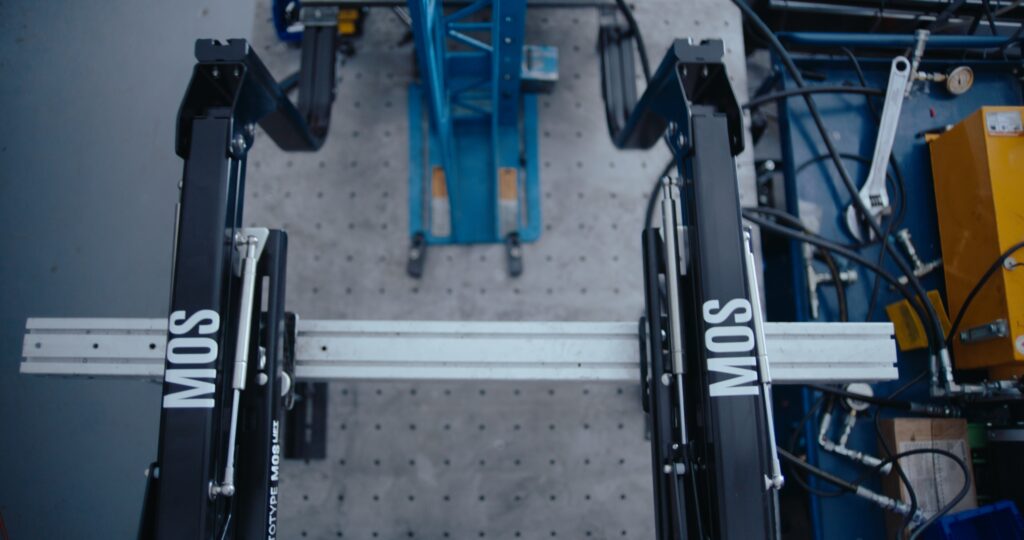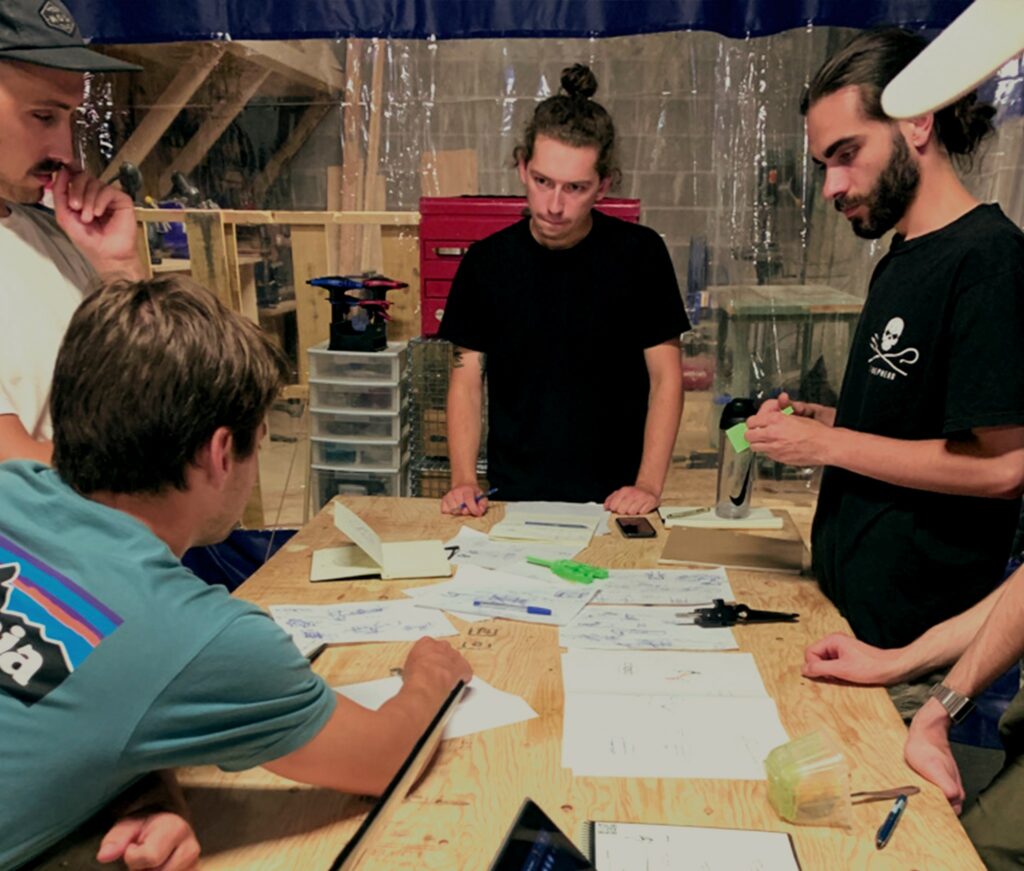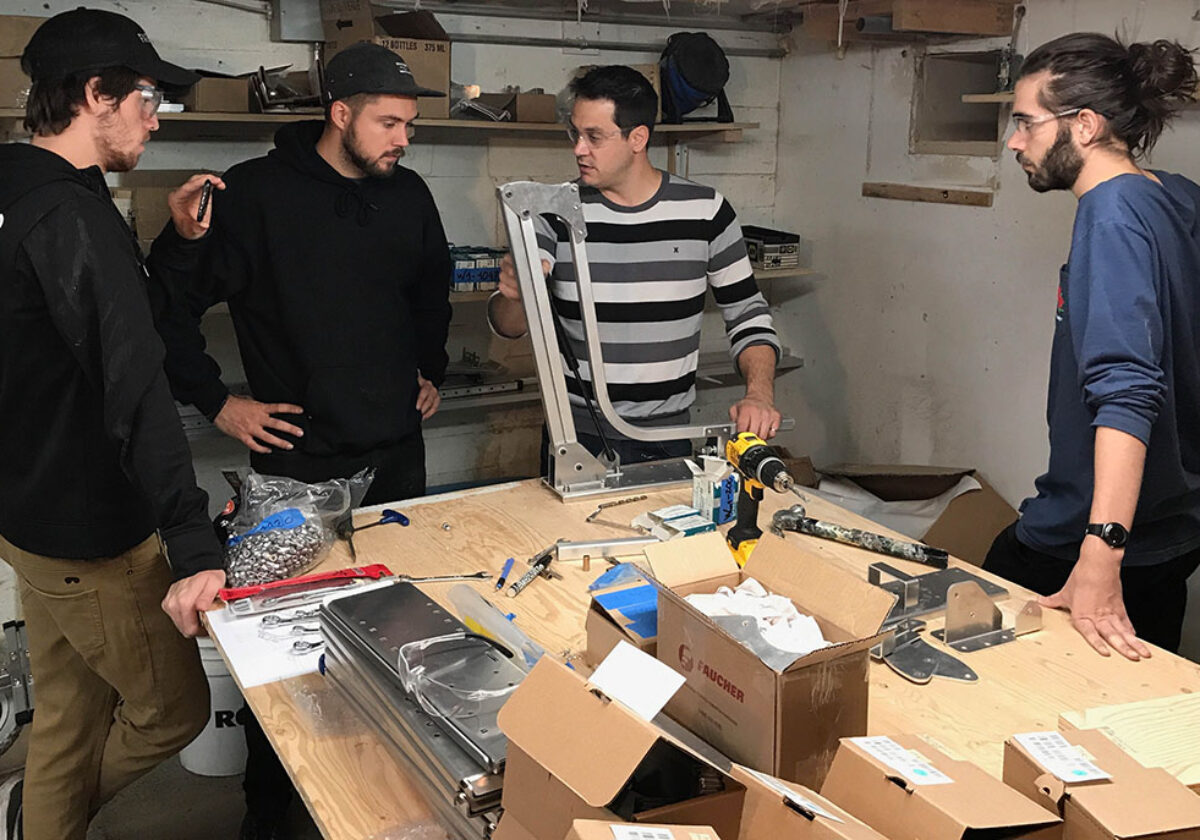Joey Hébert and Frédéric Laurin-Lalonde founded the MOS company in Quebec City in 2016. Since then, they’ve made tremendous efforts to make the outdoors more accessible, developing a rack that lowers onto the side of the vehicle, the MOS UpLift™. Agilely deployed efforts for a rack that deploys with just as much finesse!
Noticed on the show Dans l’œil du dragon and the recipient of several awards, the MOS UpLift™ has come a long way since its creation. As the rack prepares to enter outdoor stores across Quebec and Canada, industrial designer Fred takes you through the various stages of manufacturing the latest version of the MOS UpLift™.
Two productions, a ton of realizations
What’s worth mentioning is that before arriving at the current version, five years passed. We worked on five iterations of the rack, two of which resulted in small-scale unit productions. In the meantime, there have been several 3D drawings, models and prototypes, as well as numerous manufacturing plans.
The first production run of 50 units, launched during our visit to Dans l’œil du dragon, enabled us to make a number of observations. Production, almost entirely carried out in Quebec, was extremely costly and not at all profitable, or even loss-making. We also noted a safety issue related to the possibility of forgetting to lock the closing device.
The pandemic to rethink
The pandemic arrived, and rather than rush to sell racks to keep up with the consumer trend for outdoor equipment, we took a step back to rethink the product.
We conducted extensive research locally and internationally, and finally found suppliers who met our quality standards in Asia. We changed the rack extrusions, improved the hardware, simplified the mechanism and improved the design.
We collaborated with a Quebec City-based mechanical engineering firm, Rupico, in order to perfect the locking system of the MOS UpLift™. We also carried out laboratory tests with Faction Bike Studio, in Granby, enabling us to validate the strength and safety of the bracket. Our team then launched a small production run of 30 units, which was warmly welcomed by the public.
But we didn’t stop there! We still wanted to improve some of the product’s fine details, including the locking mechanism, which had to stand up to the cold and salt of our Quebec winters.

DFM : Design for Manufacturing
So our design team went back to the drawing board in the fall of 2022 to make changes to the locking device. We finally succeeded in bringing the MOS UpLift™ to its latest iteration, ready for production launch. This is what we call, in the industry, “DFM”, an acronym for “design for manufacturing”.
It’s the process of making a design truly manufacturable. This includes collaborative design work with suppliers to adapt each of our components to their production methods, changing certain parts, modifying assembly and verifying manufacturing plans.
PPAP Run, heading fo Hô Chi Minh
One flight to Vietnam later, Joey and I were off to finalize the last assembly details in February, before pressing the start button. At the GPMI factory in Ho Chi Minh, our objective was simple: to speed up the process and thus unblock production by working closely with suppliers on rack components, and then to carry out quality control on every part of the assembly.
Ultimately, we wanted to launch a “PPAP Run”. This is a design and manufacturing inspection process used to verify a supplier’s ability to repeatedly produce the same parts for mass production.
Suppliers that make us proud
Where do the various components of the MOS UpLift™ come from? The injected plastic parts are designed at Exact, a Quebec-based company specializing in plastic injection and processing. Hardware, including screws and support pistons, is made in China. The aluminum parts and assembly of the MOS UpLift™ are made at GPMI, in the city of Hô Chi Minh, Vietnam. GPMI is a reputable company based in Vietnam, having integrated the “Toyota method” which implies very high quality standards.
Why did you send production to Asia? Manufacturing costs are much lower there, and production capacity is also very attractive. It’s just not comparable to what we can do here. We have also audited all the foreign suppliers we work with to make sure they comply with ISO standards for the environment and manufacturing quality, and offer exemplary working conditions to their employees. Is there a compensation plan in case of injury? Do employees wear helmets and goggles? Do they work reasonable shifts? Is there signage to warn of hazards? These are all questions we wanted to answer in the affirmative.
Psst! But first, keep in mind that MOS is a purely Quebec company. The MOS UpLift™ is entirely conceived, designed and marketed in Quebec – in short, it’s a product made here in Québec!

Mass production and shipping
After nearly a month in Vietnam ” sorting things out “, we finally launched mass production and shipping in March. The 500 units have now arrived in Quebec in various points of sale, as well as for online sales.
Despite the delay in production and sales of our racks, we believe we have kept safety and respect for our customers at the forefront of our thinking. We wanted to make sure we ate one bite at a time and grew organically.
Just as the big companies launch new, more powerful phones every year, more aerodynamic skis, running shoes with better energy return, we’ll certainly be continuing to develop the MOS UpLift™ in the years to come.
So it’s with a view to continual innovation and improvement that we’re now launching the most advanced version of the MOS UpLift™ to date. The MOS UpLift™ has been lab-tested, road-tested in extreme conditions and driven a lot. We’re super proud of it! For the future, our team will be focusing on eco-responsible improvements to the product.
You can read more about the eco-design of the MOS UpLift™ and the principles of social and environmental responsibility adopted at MOS in this article.
You should also read

